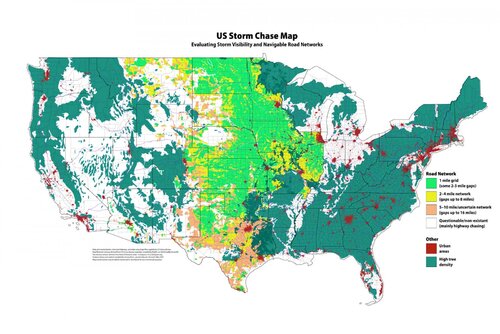Bob Schafer
EF5
I am looking at this very carefully, and could it be that some of that tree data is incorrect? Is that possible that there are so few trees in SC LA? How about right around Lake Tahoe? OH and MI, too. I have been to all those places, and maybe the green-shaded areas are only meant to depict the very thickest of forest canopies. There are some pretty wooded areas of E KS, too.

